Kidde 466627MTL Handleiding
Kidde
Niet gecategoriseerd
466627MTL
Bekijk gratis de handleiding van Kidde 466627MTL (2 pagina’s), behorend tot de categorie Niet gecategoriseerd. Deze gids werd als nuttig beoordeeld door 68 mensen en kreeg gemiddeld 4.7 sterren uit 34.5 reviews. Heb je een vraag over Kidde 466627MTL of wil je andere gebruikers van dit product iets vragen? Stel een vraag
Pagina 1/2

• Mount using a ¼ inch Concrete block, cement and tile walls:
toggle or masonry screw expansion anchor of suitable length.
Secure using multiple #10 expansion anchor screws. On tile walls
locate anchors within a joint if possible.
• : Special tools and fasteners are required for Steel post or beams
proper mounting and should be performed by a professional fire
extinguisher service company.
SUPPLIED HANGAR / BRACKET — MOUNTING
INSTRUCTIONS
A. Wall hangar
1. Fasten hangar to wall with
two screws (not included)
as suggested in general
installation guidelines.
2. Place extinguisher into hangar.
B. Plastic strap retainer with detachable straps: (models 366325
and 294706)
1. Remove straps from retainer
with scissors.
2. Fasten retainer to wall with
two screws (not included) as
suggested in general
installation guidelines.
3. Push rectangular ends of
straps through rectangular
slots on retainer. There are
circles on the body of each
strap – the circles must face
outward.
4. Place extinguisher into
retainer. Buckle straps
together to lock in place.
C. Plastic strap retainer with fold-down straps or (model 322057)
steel extinguisher strap bracket (model 896698) :
1. Fasten bracket to suitable
surface, as suggested in
general installation
guidelines, using a screw (not
included) in the upper
bracket mounting hole.
2. If your extinguisher was
shipped with a separate
metal strap: use another
screw (not included) to
mount the metal strap in the
lower bracket mounting hole.
If a separate metal strap was
not included: Install a second
screw in the lower bracket
mounting hole and proceed
to step 3.
3. Place extinguisher into bracket. Buckle straps together to
lock in place.
If your extinguisher has a hose and was shipped with a hose strap:
Slide the hose strap over the bottom of the cylinder, and secure
the nozzle end of the hose into the hose strap before placing your
extinguisher in service.
OWNER’S MANUAL:
DISPOSABLE FIRE EXTINGUISHER
DRY CHEMICAL MODELS
(Manual P/N: 21028186B)
Extinguishers should be selected and installed in accordance with
the National Fire Protection Association’s Standard for Portable
Fire Extinguishers Pamphlet NFPA-10. ( www.nfpa.org )
SELECTION
Symbols on the re extinguisher nameplate help explain and
indicate some of the acceptable types of situations, materials and
res that they can be used to address.
NFPA Fire Classication Symbols
INSTALLATION & MOUNTING
Mount extinguisher in manufacturer’s supplied hangar, retainer
or bracket.
Select a protected area to mount re extinguisher that is in plain
view and readily accessible in the event of a re.
Locate extinguisher within an area meeting the recommended
operating temperature limitations specied on nameplate.
For extinguishers weighing less than 40 lbs, the recommended
maximum mounting height from top of the re extinguisher to
oor must be less than 5 feet. Allow a minimum 4 inch clearance
from oor to help promote proper air circulation and avoid
potential corrosion.
Ensure the re extinguisher mounting hardware selected and used
is of the type, quality and size to properly secure unit onto the
surface. Mounting hardware should never be exposed where it can
contact the cylinder surface and present any potential rubbing or
wear issues.
Seek professional advice when addressing boat, vehicle or other
mobile mounting applications. Proper USCG marine mounting
bracket is listed on nameplate. Marine approvals are only valid
when the designated marine bracket is utilized.
SUGGESTED GENERAL INSTALLATION GUIDELINES
• Use quality #10 x 1-¼ inch Walls where wood studs are located:
or longer wood screws.
• Mount a ¾ inch back board of a size Sheet rock and dry wall:
extending 2 inches beyond the actual dimensions of the
extinguisher as a back support. Use multiple 3/16” inch toggle
bolts to properly secure the backboard support. The fire
extinguisher hangar or bracket can then be mounted onto the
back board using # 10 x 1 inch long wood screws.
CAUTIONS & WARNINGS
• Never incinerate a fire extinguisher.
• Never attempt to modify, alter or recharge a disposable fire
extinguisher model.
• Never attempt to test an extinguisher by partially discharging it.
This will cause loss of pressure, promote leakage and will
prevent the fire extinguisher from operating properly.
• Never intentionally discharge a fire extinguisher directly into a
person’s face. The velocity of discharged agent may cause injury.
• Never misuse or allow children to play with fire extinguishers.
• Fire extinguishers are pressurized mechanical devices that
require periodic care and service to remain safe and operable.
• Under certain fire and heat conditions, the dry chemical powder
in ABC type extinguishers will cause damage or prove extremely
difficult to remove from oven surfaces, including self-cleaning
models. Do not use self-cleaning feature to remove ABC powder.
OPERATION AND USE
Read and familiarize yourself with the re extinguisher nameplate
operating instructions immediately after purchase. Additional
instruction and training on the proper use of re extinguishers is
recommended and available from various sources.
DETAILED USE INSTRUCTIONS
1. Call the fire department/sound the alarm.
2. Get everyone out and have a plan for safe retreat.
3. Pull and remove ring pin, breaking the inspection/tamper seal.
4. Transport fire extinguisher to safe upwind position from fire, for
best visibility, and to avoid smoke and heat being produced.
5. Properly position yourself away from the fire, referencing the
proper minimum starting distance specifically identified on the
fire extinguisher nameplate operating instructions. Never
position yourself so that the fire blocks your escape route.
6. Remove hose from retainer band (if equipped).
7. Hold and keep the fire extinguisher in a vertical/upright position
and aim the discharge nozzle at the base of the fire.
8. Firmly squeeze the operating lever fully and with a side-to-side
sweeping motion, to avoid splashing or spreading of fire, apply
the extinguishing agent to the base of the flames.
9. Attempt to work the fire from the front edge to the back edge.
Avoid positioning any part of your body over, or stepping into a
fuel area during re ghting or after extinguishment. Caution
should be exercised af ter extinguishment, as some re situations
may re-ash.
AFTER USE
After any use or discharge, ensure your re extinguisher is
promptly replaced. Even only a momentary discharge will cause
leakage and the extinguisher to later not operate.
After re hazard has cooled and been properly removed, the
prompt clean up of any extinguishing agent residue is
recommended.
MONTHLY VISUAL INSPECTION
Fire extinguisher inspections should be performed upon initial
placement into service and at regular periodic intervals not to
exceed 31 days.
Visual inspection instructions:
1. Ensure the fire extinguisher is visible and access is unobstructed.
2. Ensure the fire extinguisher is properly mounted and secure.
3. Ensure the front nameplate operating instructions face outward
and are legible. Relocate extinguisher or clean nameplate as
required.
(Correct and resolve any discrepancies observed in steps 1, 2, and 3)
4. Ensure pull pin and/or original visual inspection tamper seal is
installed and still intact. (Replace extinguisher if broken or
missing)
5. Ensure pressure gauge needle reads within green operable area.
(Replace extinguisher if discrepancy observed)
6. Ensure the discharge nozzle and/or hose assembly is
unobstructed and securely attached. (Wipe obstruction clear or
replace extinguisher)
7. Closely examine all external extinguisher components for any
signs of damage, impact, wear, leakage or corrosion. (Replace
extinguisher if any type of discrepancy is observed)
8. Heft or weigh fire extinguisher to ensure it is properly charged.
Total charged extinguisher weight (gross weight) is indicated on
the product label/nameplate. (Replace extinguisher if used or
weight is outside tolerance)
9. Date and initial fire extinguisher inspection tag/record.
NOTE: Anytime an equipment related discrepancy described in
steps 4 through 8 is observed during an inspection procedure, the
re extinguisher must be discarded and replaced.
NOTE: Annual maintenance requirements include verication of
the re extinguisher weight at least annually and that the year of
manufacture stamped on the bottom of the cylinder is within the
designated 12 year maximum shelf life.
Some local jurisdictions require special annual maintenance tags.
ANNUAL MAINTENANCE
If you have purchased this re extinguisher to comply with local
re code occupancy requirements, the local re prevention
authorities may require annual maintenance examinations that
must be performed by properly trained and certied persons in
accordance with the National Fire Protection Association (NFPA)
and the manufacturer’s recommendations. Contact your local re
department or Fire Marshal’s ofce if you are unsure of these
requirements.
SIX OR TWELVE-YEAR* LIMITED WARRANTY
TERMS
For six (6) or twelve (12) years from date of purchase, Kidde will
repair or replace this product to the original owner free of charge,
if defective in material or workmanship. Date of purchase is
determined by proof of original purchase or by date stamp on
bottom of cylinder. This warranty does not apply to normal wear
of parts and damage resulting from accident, alteration, abuse, or
failure to follow instructions supplied. Kidde, at its option, may
refund the purchase price in lieu of replacement or repair. ANY
AND ALL IMPLIED WARRANTIES, INCLUDING ANY WARRANTY OF
MERCHANTABILITY OR FITNESS FOR A PARTICULAR PURPOSE
SHALL BE LIMITED TO A PERIOD OF SIX (6) OR TWELVE (12) YEARS
FROM DATE OF PURCHASE. Kidde, its dealers and distributors shall
not be responsible or in any way liable for any special or
consequential damages for breach of any warranty or implied
warranty. This warranty gives you specic legal rights, and you
may also have other rights which vary from state to state or
jurisdiction.
*Twelve-year warranty applies only to these models: KD57W-5BC,
KCD57W-5BC, MAR5, MAR5C, MAR10, MAR10C, MAR110,
MAR110C, MAR210, MAR210C, MAR340 and MAR340C
Company Contact:
Kidde
1016 Corporate Park Drive
Mebane, NC 27302
www.Kidde.com
Product Support: 800-880-6788
CLASS A: O nary Combustiblesrdi
Paper, cloth, w d, upholstery, bber, pla ics.oo ru st
CLASS B: Flammable Liquids and Gases
Paper, cloth, w d, upholstery, bber, pla ics.oo ru st
CLASS C: ergized Electrical SituationsEn
Fire sit tions invo ing rgized electricity.ua lv ene
ENGLISH
1
7
2
3 4
6
1016 Corporate Park Drive
Mebane, NC 27302, EE.UU.
800-880-6788 | www.kidde.com
Date By Pressure Weight Physical Condition
TAG INSPECTION RECORD
REGISTRO DE INSPECCIÓN DE ETIQUETAS
FASTEN TAG TO EXTINGUISHER
BEFORE MOUNTING UNIT
DO NOT REMOVE
OR ALTER THIS TAG
NO QUITE
NI MODIFIQUE
ESTA ETIQUETA
To use a re extinguisher,
remember the phrase PASS:
1. Pull the pin
2. Aim at the base of the re
3. Squeeze and hold the lever
4. Sweep from side to side
FIJE LA ETIQUETA AL EXTINTOR
ANTES DE MONTAR LA UNIDAD
Fecha Por Presión Peso Estado físico

ESPAÑOL
Lorem
IMPORTANT: To ensure re extinguisher will be ready when
needed, follow inspection and maintenance instructions in
manual and familiarize yourself with operating instructions
on the nameplate. Protect tag and extinguisher if exposed
to weather.
IMPORTANTE: Para asegurarse de que el extintor de incendios
esté listo para usarlo cuando sea necesario, siga las instrucciones
de inspección y mantenimiento en el manual y familiarícese con
las instrucciones de funcionamiento en la placa. Proteja la
etiqueta y el extintor si está expuesto a la intemperie.
YEAR OF MFG/
AÑO DE FABRICACIÓN:
SERIAL/NÚMERO DE SERIE:
MODEL/NÚMERO DE MODELO:
SERVICE / INSPECTION RECORD TAG
(Required for UL Listing)
ETIQUETA DE REGISTRO DE MANTENIMIENTO O INSPECCIÓN
(Necesario para la certicación UL)
DO NOT REMOVE
OR ALTER THIS TAG
NO QUITE
NI MODIFIQUE
ESTA ETIQUETA
DISCARD AND REPLACE IMMEDIATELY AFTER USE
DESECHE Y SUSTITUYA INMEDIATAMENTE DESPUÉS DE UTILIZAR
PRODUCT SUPPORT
SOPORTE TÉCNICO
800-880-6788
Solicite asesoramiento profesional cuando deba realizar aplicaciones
de montaje en botes, vehículos u otras aplicaciones de montaje móviles.
En la placa se enumera el soporte de montaje marino USCG adecuado.
Las aprobaciones marinas solo son válidas cuando se utiliza el soporte
de montaje marino especíco.
INSTRUCCIONES GENERALES DE INSTALACIÓN
SUGERIDAS
• Paredes con tabique: Utilice tornillos para madera de calidad
N.º10 de 1¼pulgadas de longitud o superior.
• Paneles de yeso y cartón yeso: Monte una placa trasera de un tamaño
de ¾de pulgada que se extienda 2pulgadas adicionales a las
dimensiones reales del extintor como soporte trasero. Use varios
tornillos de fiador de 3/16pulgadas para fijar el soporte de la placa
trasera. El soporte estándar o el soporte mural del extintor de
incendios se puede montar en la placa trasera con tornillos para
madera N.º10 de 1pulgada de longitud.
• Bloques de hormigón, cemento y paredes de azulejos: Monte con un
anclaje de expansión para tornillos fiador o de mampostería de ¼
pulgadas de una longitud adecuada. Fije con varios tornillos de
anclaje de expansión N.º10. Si es posible, en paredes de azulejos,
coloque los anclajes en una unión.
• Postes de acero o vigas: Se necesitan herramientas y fijadores
especiales para el realizar montaje correcto, y lo debe hace una
empresa de servicios profesionales de extintores de incendios.
SOPORTE ESTÁNDAR O SOPORTE MURAL
PROPORCIONADO: INSTRUCCIONES DE MONTAJE
A. Soporte mural de pared
1. Fije el soporte mural en la
pared con dos tornillos
(no se incluyen) como se
sugiere en las instrucciones
generales de instalación.
2. Coloque el extintor en el soporte mural.
B. Soporte de cabina con correas plásticas desmontables:
(modelos 366325 y 294706)
1. Quite las correas del soporte con
tijeras.
2. Fije el soporte de cabina en
la pared con dos tornillos
(no se incluyen) como se
sugiere en las instrucciones
generales de instalación.
3. Pase los extremos rectangulares
de las correas a través de las
ranuras rectangulares del
soporte de cabina. Hay círculos
en el cuerpo de cada correa.
Estos deben mirar hacia afuera.
4. Coloque el extintor en el
soporte de cabina. Abroche las
correas para fijarlo en el lugar.
MANUAL DE USUARIO:
MODELOS DE EXTINTORES DE
INCENDIOS DE POLVO QUÍMICO SECO
(Manual P/N: 21028186B)
Los extintores se deben seleccionar e instalar de acuerdo con el
estándar descrito en el folleto de la Asociación Nacional de Protección
contra Incendios para los extintores de incendios portátiles, NFPA-10.
(www.nfpa.org)
DESIGNACIÓN
Los símbolos en la placa del extintor ayudan a explicar e indicar algunos
de los tipos de situaciones, materiales e incendios para los que se puede
usar el extintor.
Símbolos de clasicación de incendios de la NFPA
INSTALACIÓN Y MONTAJE
Monte el extintor en el soporte mural, el soporte de cabina o el
soporte estándar proporcionados del fabricante.
Seleccione un área protegida para montar el extintor de incendios que
esté a la vista y sea de fácil acceso en caso de incendios.
Coloque el extintor en un área que cumpla las limitaciones de
temperatura de operación recomendadas y especicadas en la placa.
Para los extintores que pesan menos de 40libras, la altura máxima de
montaje recomendada desde la parte superior del extintor hasta el piso
debe ser inferior a 5pies. Deje un espacio mínimo de 4pulgadas del
suelo para ayudar a fomentar la circulación de aire adecuada y evitar
una posible corrosión.
Asegúrese de que el equipo de montaje del extintor de incendios
seleccionado y utilizado es del tipo, la calidad y el tamaño adecuado
para jar la unidad a la supercie. El equipo de montaje nunca debe
estar expuesto a lugares donde puede entrar en contacto con la
supercie del cilindro y presentar cualquier problema de roce o desgaste.
C. Soporte de cabina con correa plásticas plegables (modelo 322057) o
soporte estándar con correas de acero para extintor (modelo 896698):
1. Fije el soporte estándar en una
superficie adecuada, como se
sugiere en las instrucciones
generales de instalación, con un
tornillo (no se incluye) en el
orificio superior del soporte de
montaje.
2. Si el extintor se envió con una
correa metálica independiente:
utilice otro tornillo (no se
incluye) para instalar la correa
metálica en el orificio inferior
del soporte de montaje. Si no se
incluye una correa metálica:
Instale un segundo tornillo en el
orificio inferior del soporte de
montaje y avance al paso 3.
3. Coloque el extintor en el soporte. Abroche las correas para fijarlo
en el lugar.
Si el extintor cuenta con una manguera y se envió con una correa para
la manguera: Deslice la correa para la manguera por la parte inferior del
cilindro y je el extremo de la manguera en la correa para la manguera
antes poner el extintor en servicio.
PRECAUCIONES Y ADVERTENCIAS
• Nunca incinere un extintor de incendios.
• Nunca intente modificar, alterar o recargar un modelo de extintor de
incendios desechable.
• Nunca intente probar un extintor descargándolo parcialmente. Esto
causará pérdida de presión, fomentará las fugas y evitará que el
extintor de incendios funcione correctamente.
• Nunca descargue intencionalmente un extintor de incendios
directamente en el rostro de una persona. La velocidad de descarga
del agente puede causar lesiones.
• Nunca lo utilice de mala manera o deje que los niños jueguen con
extintores.
• Los extintores son dispositivos mecánicos presurizados que requieren
atención y mantenimiento periódico para que permanezcan seguros y
operables.
• Bajo ciertas condiciones de fuego y calor, el polvo químico seco en los
extintores de tipo ABC causa daños o resulta extremadamente difícil
de eliminar de las superficies lisas, incluidos los modelos de
autolimpieza. No utilice la función de autolimpieza para eliminar el
polvo ABC.
FUNCIONAMIENTO Y USO
Lea y familiarícese con las instrucciones de funcionamiento de la placa
del extintor de incendios inmediatamente después de su adquisición. Se
recomienda instrucción y capacitación adicional sobre el uso adecuado
de extintores de incendios, que está disponible en diversas fuentes.
INSTRUCCIONES DETALLADAS DE USO
1. Llame al departamento de bomberos o active la alarma.
2. Indique a todos que deben salir y tenga un plan para una
evacuación segura.
3. Tire y quite el pasador de seguridad y rompa el sello de inspección o
de manipulación.
4. Acarree el extintor de incendios a una posición segura contra el
viento en relación con el incendio para mejorar la visibilidad y para
evitar la generación de humo y calor.
5. Ubíquese debidamente lejos del fuego, use de referencia la
distancia de inicio mínima apropiada identificada
específicamente en las instrucciones de operación de la placa
del extintor de incendios. Nunca se ubique de modo que el
fuego bloquee su ruta de escape.6. Retire la manguera de la
banda del soporte de cabina (si cuenta con una).
7. Sujete y mantenga el extintor en una posición vertical o recta y
apunte la boquilla de descarga a la base del fuego.
8. Apriete firme y completamente la válvula de funcionamiento y, con
un movimiento de barrido de lado a lado, para evitar salpicaduras o
propagación del fuego, aplique el agente extintor en la base de las
llamas.
9. Trate de extinguir el fuego desde el borde delantero hasta el borde
posterior.
Evite entrar o acercar su cuerpo a un área combustible durante la
extinción de un incendio o después de extinguirlo. Se debe tener
precaución después de la extinción, p2-ya que algunas situaciones de
incendio pueden volver a aparecer.
DESPUÉS DE SU USO
Después de cualquier uso o descarga, asegúrese de que su extintor de
incendios se sustituya inmediatamente. Incluso solo una descarga
momentánea provocará fugas y no permitirá el funcionamiento
posterior del extintor.
Después de que el peligro de incendio se haya enfriado y eliminado
correctamente, se recomienda limpiar oportunamente cualquier
residuo de agentes extintores.
INSPECCIÓN VISUAL MENSUAL
Las inspecciones del extintor de incendios se deben realizar desde la
puesta en servicio inicial y en intervalos periódicos regulares que no
deben superar los 31días.
Instrucciones de inspección visual:
1. Asegúrese de que el extintor de incendios esté a la vista y el acceso
no esté obstruido.
2. Asegúrese de que el extintor de incendios esté bien montado y fijo.
3. Asegúrese de que las instrucciones de funcionamiento de la placa
frontal miren hacia el exterior y sean legibles. Reubique el extintor o
limpie la placa según sea necesario.
(Corrija y resuelva las discrepancias observadas en los pasos 1, 2 y 3)
4. Asegúrese de que el pasador de seguridad o el sello de manipulación
de inspección visual original estén instalados y se mantengan
intactos. (Sustituya el extintor si está roto o perdido)
5. Asegúrese de que la aguja del manómetro se encuentre dentro del
área de funcionamiento verde. (Sustituya el extintor si observa
discrepancias)
6. Asegúrese de que la boquilla de descarga o el conjunto de la
manguera estén firmemente conectados y no estén tapados.
(Quite la obstrucción o sustituya el extintor)
7. Examine detenidamente todos los componentes externos del extintor
para buscar cualquier señal de daño, impacto, desgaste, fuga o
corrosión. (Sustituya el extintor si observa algún tipo de discrepancia)
8. Levante o pese el extintor de incendios para asegurarse de que está
correctamente cargado. El peso total del extintor cargado (peso
bruto) se indica en la etiqueta o placa del producto. (Sustituya el
extintor si el uso o el peso están fuera de los límites de tolerancia)
9. Registre la fecha y firme sus iniciales en el registro o la etiqueta de
inspección del extintor de incendios.
NOTA: Cuando observe una discrepancia relacionada con el equipo
descrita en los pasos 4 al 8 durante un procedimiento de inspección, el
extintor de incendios se debe desechar y sustituir.
NOTA: Los requisitos de mantenimiento anual incluyen la vericación
del peso del extintor de incendios como mínimo una vez al año y que el
año de fabricación grabado en la parte inferior del cilindro esté dentro
de la vida útil máxima designada de 12años.
Algunas jurisdicciones locales requieren etiquetas de mantenimiento
anuales especiales.
MANTENIMIENTO ANUAL
Si adquirió este extintor de incendios para cumplir con los requisitos de
posesión del código local contra incendios, las autoridades locales de
protección contra incendios pueden requerir inspecciones de
mantenimiento anuales que deben realizar profesionales certicados
con una capacitación adecuada según los estándares de la Asociación
Nacional de Protección contra Incendios (NFPA) y las recomendaciones
del fabricante. Póngase en contacto con su departamento de
bomberos local o con la ocina del jefe de bomberos si tiene dudas
sobre estos requisitos.
TÉRMINOS DE LA GARANTÍA LIMITADA DE SEIS O DOCE
AÑOS*
Durante seis (6) o doce (12) años a partir de la fecha de compra, Kidde
reparará o reemplazará este producto al propietario original de forma
gratuita si presenta defectos materiales o mano de obra. La fecha de
compra se determina con el comprobante de compra original o con la
marca de fecha en la parte inferior del cilindro. Esta garantía no se
aplica al desgaste normal de las piezas ni a los daños causados por
accidentes, alteraciones, abusos o incumplimiento de las instrucciones
indicadas. Kidde, a su discreción, puede reembolsar el precio de compra
en lugar de realizar el reemplazo o la reparación. TODA GARANTÍA
IMPLÍCITA, INCLUIDA CUALQUIER GARANTÍA DE COMERCIABILIDAD O
IDONEIDAD PARA UN FIN ESPECÍFICO, SE LIMITARÁ A UN PERÍODO DE
SEIS (6) O DOCE (12) A PARTIR DE LA FECHA DE COMPRA. Kidde, sus
concesionarios y distribuidores no asumirán ninguna responsabilidad
por daños especiales o consecuentes a causa del incumplimiento de
cualquier garantía o garantía implícita. Esta garantía le ofrece los
derechos legales especícos, y también puede tener otros derechos que
varían según el estado o la jurisdicción.
* Los doce años de garantía solo se aplican a estos modelos: KD57W-5BC,
KCD57W-5BC, MAR5, MAR5C, MAR10, MAR10C, MAR110, MAR110C,
MAR210, MAR210C, MAR340 y MAR340C
Contacto de la empresa:
Kidde
1016 Corporate Park Drive
Mebane, NC 27302
www.Kidde.com
Product Support: 800-880-6788
CLASE A: Combustibles comunes
Papel, tela, madera, tapicería, goma, plásticos.
CLASE B: Líquidos y gases inamables
Papel, tela, madera, tapicería, goma, plásticos.
CLASE C: Situaciones de electricidad energizada
Situaciones de incendio que involucran electricidad energizada.
1
7
2
3 4
6
Para utilizar un extintor de
incendios, recuerde la sigla PASS:
1. Pull: tirar el pasador
2. Aim: apuntar a la base del fuego
3. Squeeze: apretar y sujetar la válvula
4. Sweep: rociar de lado a lado
Product specificaties
| Merk: | Kidde |
| Categorie: | Niet gecategoriseerd |
| Model: | 466627MTL |
Heb je hulp nodig?
Als je hulp nodig hebt met Kidde 466627MTL stel dan hieronder een vraag en andere gebruikers zullen je antwoorden
Handleiding Niet gecategoriseerd Kidde
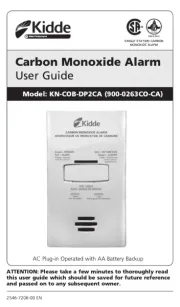
2 September 2025
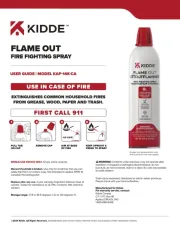
1 September 2025

2 December 2024

2 December 2024
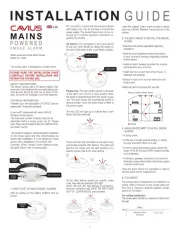
26 September 2024
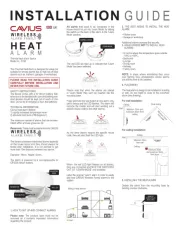
26 September 2024
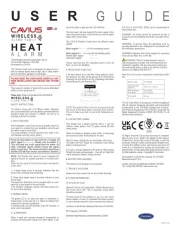
26 September 2024

24 September 2024

18 September 2024
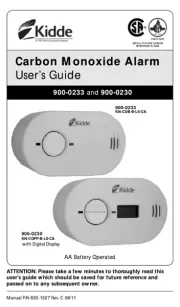
18 September 2024
Handleiding Niet gecategoriseerd
- Squarp Instruments
- Newport Brass
- Brady
- Epiphan
- Tekron
- Block & Block
- Yealink
- Sensiplast
- Ag Neovo
- Primewire
- IXTECH
- HealthPostures
- Kubo
- Media-tech
- Chieftec
Nieuwste handleidingen voor Niet gecategoriseerd

14 September 2025

14 September 2025

13 September 2025

13 September 2025

13 September 2025

13 September 2025

13 September 2025

13 September 2025

13 September 2025

13 September 2025